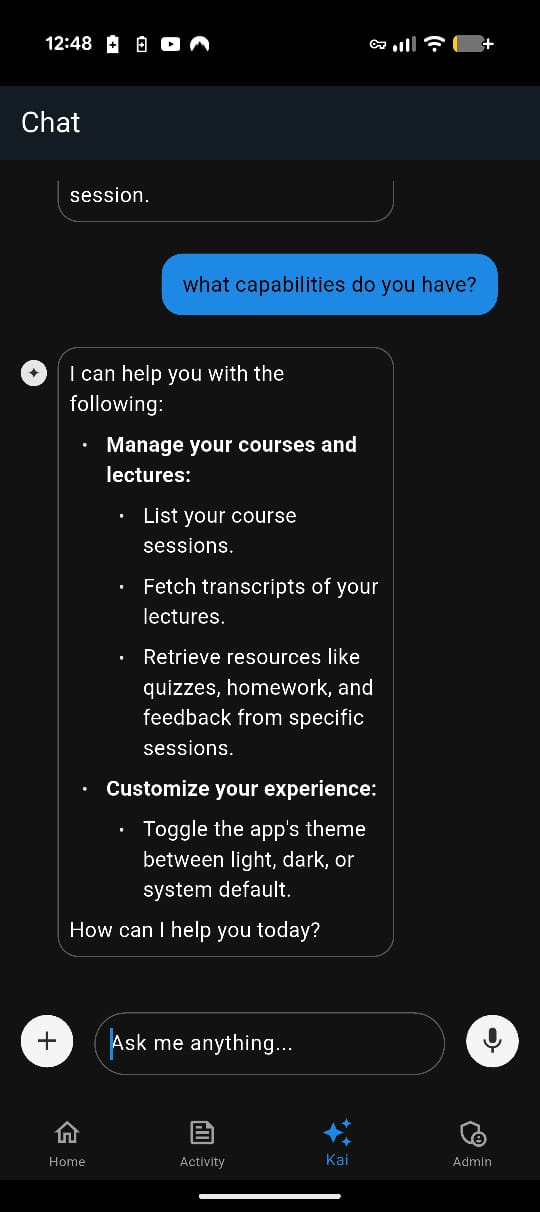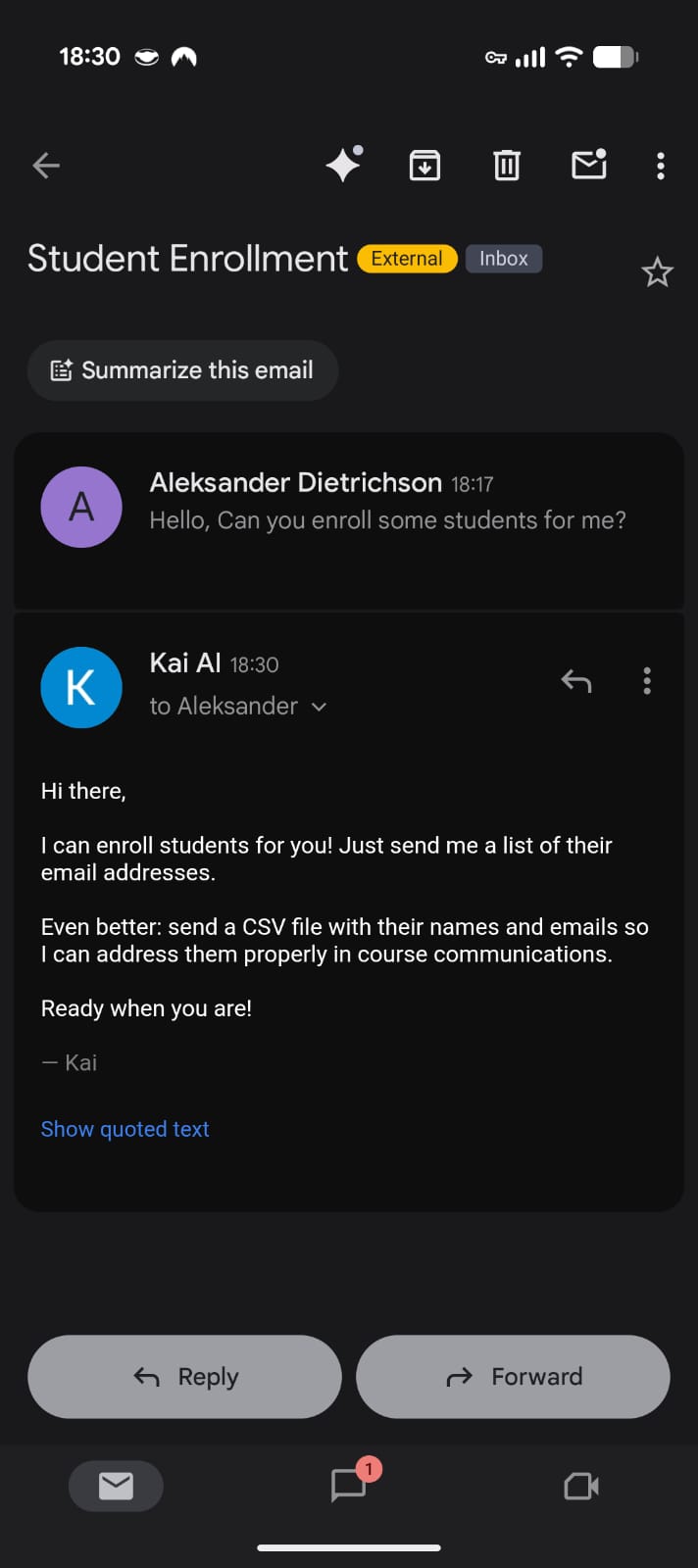Understanding Kai’s Capabilities
An Intelligent Assistant That Knows Its Strengths
Kai is designed with built-in awareness of its own capabilities and limitations. This self-awareness means you can discover what Kai can do for you in the most natural way possible—simply by asking.
How to Learn What Kai Can Do
Browse the Documentation
You can explore Kai’s features systematically through this documentation, where each capability is explained in detail with examples and best practices.
Ask Kai Directly
Alternatively, you can have a conversation with Kai about its abilities. Simply ask questions like:
- “How can I enroll students?”
- “Can you help me create quiz questions?”
- “What types of reports can you generate?”
- “Are you able to schedule office hours?”
Kai will provide clear, helpful responses about what it can and cannot do, guiding you naturally toward the features that best support your teaching needs.
Consistent Intelligence Across All Platforms
Whether you prefer the mobile app, email, or messaging apps like WhatsApp, Kai’s self-awareness remains consistent. The same intelligent understanding of capabilities is available regardless of how you choose to interact:
Chat Interface (Mobile App)
The Kai mobile app provides an intuitive chat interface for immediate, conversational interactions with full feature discovery.

[Screenshot: Chat interface showing a user asking “How can I enroll students?” with Kai’s response]
Email Communication
Send your questions to Kai via email and receive detailed responses about available features and how to use them.

Email thread showing Kai’s response to an enrollment inquiry
Messaging Apps
Connect through WhatsApp or other supported messaging platforms for quick capability checks on the go.
[Screenshot: WhatsApp conversation about Kai’s features]
Natural Language Understanding
Kai interprets your questions intelligently, so you don’t need to use specific keywords or phrases. Whether you ask “Can you grade essays?” or “I need help evaluating student writing,” Kai understands your intent and responds appropriately.
This natural interaction design means you can focus on your teaching goals rather than learning complex commands or navigating through menus. Kai adapts to your communication style, making the discovery of its capabilities as effortless as having a conversation with a knowledgeable colleague.
Contextual Help Within the App
Throughout Kai’s interface, you’ll find info icons (ⓘ) that provide contextual help exactly when you need it. These unobtrusive icons appear next to features, settings, and options, offering quick explanations without requiring you to leave your current task or search through documentation.
Simply hover over or tap any info icon to see a helpful tooltip explaining the feature’s purpose, how to use it effectively, and any relevant tips. This contextual approach ensures that help is always available at your fingertips, reducing the learning curve and helping you make the most of Kai’s capabilities as you work.
Note: Kai will always be transparent about its limitations. If you ask for something outside its current capabilities, it will clearly explain what it cannot do and suggest alternative approaches when possible.